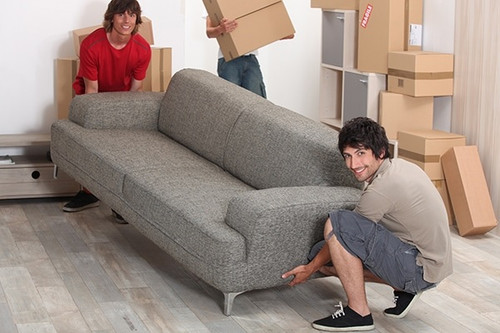The Demands of Being a Furniture Removalist: Tackling Chafing on the Job
Posted by Jack Miller on 5th Jul 2025
Being a furniture removalist is a physically demanding job that involves lifting, carrying, and maneuvering heavy items from one location to another. While it’s rewarding to help people during their moving process, this occupation comes with various challenges, one of which is the discomfort caused by chafing, particularly in the inner thighs. Understanding the causes of chafing and how to prevent it can make a significant difference in the daily life of a removalist.
The Physically Demanding Nature of Furniture Removal
Furniture removalists are tasked with moving all types of household and office items, from sofas and beds to desks and filing cabinets. This work often requires bending, stretching, and sometimes even climbing stairs, which puts a strain on the body. Repeated movements, combined with the weight of the furniture, can lead to friction between the thighs and clothing, resulting in painful chafing.
Understanding Chafing
Chafing rash occurs when skin rubs against skin or clothing, causing irritation and inflammation. For removalists, the inner thighs are particularly vulnerable due to the constant movement and pressure they endure. When the skin's surface is repeatedly rubbed over long periods, especially in hot or humid conditions, it can become red, sore, and uncomfortable.
Chafing is not only a nuisance but can also affect productivity. When discomfort takes center stage, it can be challenging to focus on the task at hand, leading to decreased efficiency and motivation. Furthermore, severe chafing can lead to blisters or skin damage, which might require time off work for healing—something no removalist can afford.
Prevention Strategies for Chafing
- Choose the Right Clothing: Wearing suitable clothing is crucial for preventing chafing. Opt for moisture-wicking fabrics that reduce friction and keep the skin dry. Avoid cotton, as it tends to retain sweat, increasing the chance of chafing. Instead, look for blends that include spandex or polyester, providing comfort and flexibility.
- Stay Dry: Moisture exacerbates chafing. It’s essential to stay as dry as possible while working. Using anti-chafing creams or powders can create a protective barrier on the skin, preventing friction and absorbing excess moisture.
- Use Anti-Chafing Bands: Wearing anti-chafing thigh bands can be particularly effective for removalists. These bands fit snugly around the thighs and reduce skin-to-skin contact, significantly minimizing the risk of chafing. They are designed to wick away moisture and are often made from breathable materials, ensuring comfort throughout a long workday.
- Take Breaks to Adjust: Regular breaks can help prevent prolonged friction. Use this time to adjust clothing, apply anti-chafing products, or change out of sweaty garments if possible. Taking a moment to re-evaluate your comfort can pay off in the long run.
- Stay Hydrated: Hydration is essential not just for overall health, but it can also help regulate body temperature. Staying cool and hydrated may help reduce sweating, consequently decreasing the chance of chafing.
The Importance of Addressing Chafing
For furniture removalists, dealing with chafing shouldn’t be overlooked. Addressing this issue not only enhances comfort but also helps maintain productivity and efficiency on the job. By implementing preventive measures, removalists can focus on their tasks without the distraction and discomfort of chafiing.
In conclusion, being a furniture removalist is a rewarding yet demanding job. Understanding the causes of inner thigh chafing and employing strategies to manage and prevent it can lead to a more pleasant and productive work experience. By investing in the right clothing and products, removalists can keep their minds on the move and their bodies comfortable, ensuring that every move goes smoothly.

